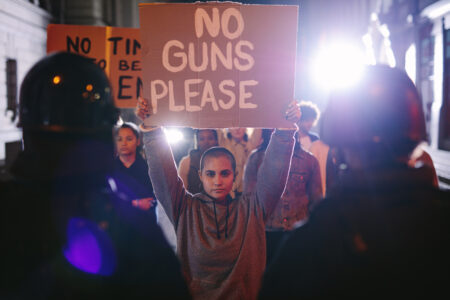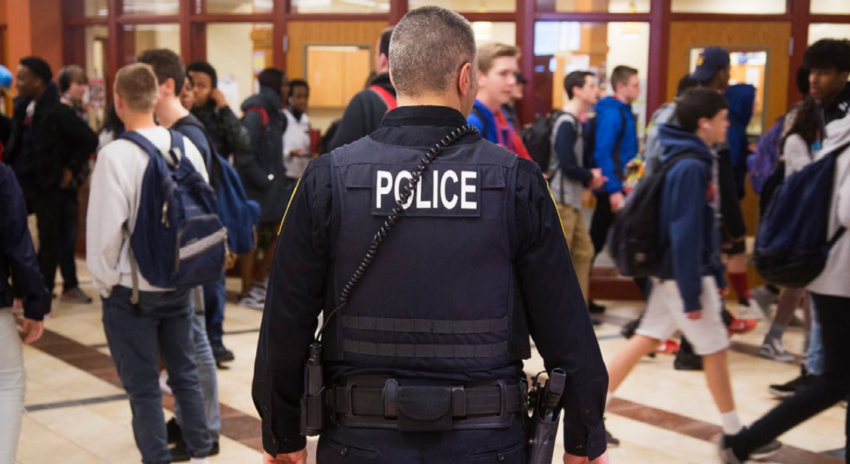
Share On Social!
Schools today are under-resourced, and students are overcriminalized, particularly children of color and those with disabilities, according to a new report from the American Civil Liberties Union (ACLU).
For the first time, the U.S. Department of Education now requires every public school to report the number of social workers, nurses, and psychologists employed.
The ACLU analysis of the federal data provides a state-level, student-to-staff ratio for each position as well as a review of law enforcement presence in schools, student arrests, and referrals.
The real crisis of schools isn’t violence, but a widespread failure to hire enough support staff that can meet students’ mental health needs, according to the report.
The study uses data from the 2015-16 academic year, collected through the U.S. Department of Education’s Civil Rights Data Collection (CRDC), to better understand access to school-based mental health (SBMH) services in relation to policing in schools.
Mental Health and Schools
Nearly 80% of youth in need of mental health services do not have access to adequate services in their communities. Of those who do receive services, more than 70% receive services in schools.
School-based mental health providers—such as counselors, nurses, social workers, and psychologists—are frequently the first to identify children in need. These students experience sickness, stress, or trauma; they can act out, hurt themselves, or harm others as a result.
These providers improve health outcomes for those students as well as advance school climate and school safety.
“Schools that employ more school-based mental health providers see improved attendance rates, lower rates of suspension and other disciplinary incidents, lower rates of expulsion, improved academic achievement and career preparation, and improved graduation rates,” the report states.
Unfortunately, millions of students are underserved and lack access to critical support systems.
Police and Schools
Law enforcement officers are trained to focus on rule and order, not student social and emotional well-being.
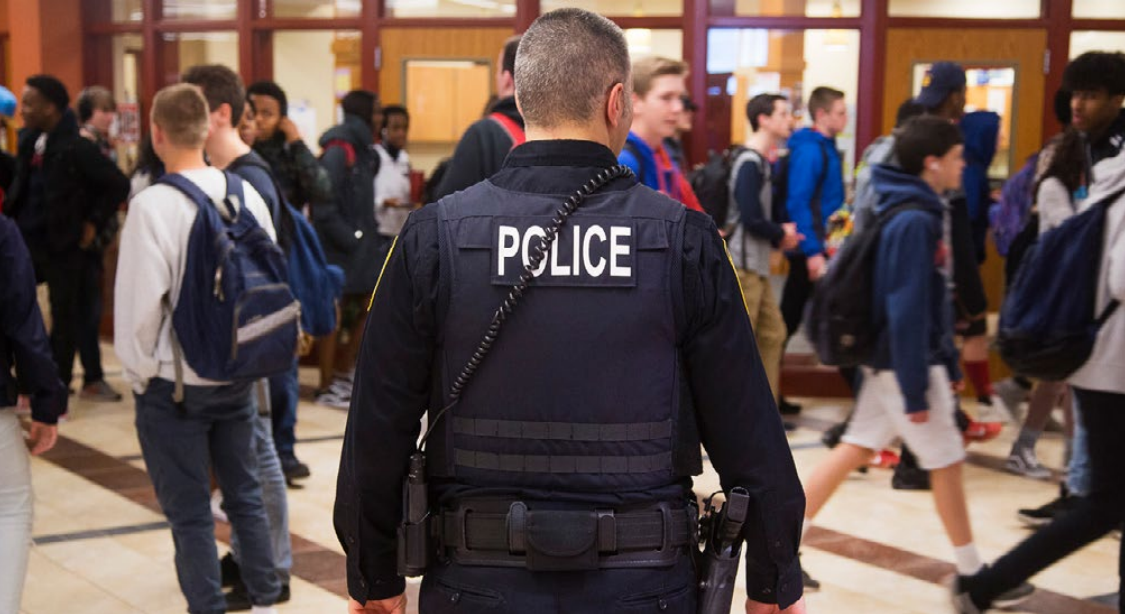
There is no evidence that increased on-campus police officers improve school safety, according to the report.
In many cases, they are causing harm and contributing to the historical inequities underprivileged students face. Schools employing police officers see increases in student offenses and school-based arrests by as much as 400%, according to the report.
However, the use of school police and similar measures have drastically increased over the past decades.
Since the school shooting at Marjory Stoneman Douglas High School in Parkland, Florida last year, at least 26 states added nearly $1 billion in funding for school safety programs — allocations for school resource officers being one of the largest funded items — according to The 74 Million.
Millions of students are now in schools with law enforcement, but no health support staff.
“Even in schools with a significant lack of health support staff, law enforcement presence is flourishing,” according to the report.
These students are being criminalized— removed from classes, subjected to physical restraint, and interrogated for common adolescent behavior.
Instead of being met with counselors, social workers and mental health providers, these students are met with pepper spray, handcuffs, tasers, and guns.
Mental Health and Law Enforcement Staffing
Professional standards recommend at least one counselor and one social worker for every 250 students, as well as one nurse and one psychologist for every 750/700 students, respectively.
School-based mental health programs are falling short:
- Twenty states met the student-to-nurse ratio; however, more than 70% of the nation’s students attended schools that did not meet the recommended ration.
- Only three states met the student-to-counselor ratio.
- No states met the student-to-social worker ratio.
- Only four states met the student-to-psychologist ratio.
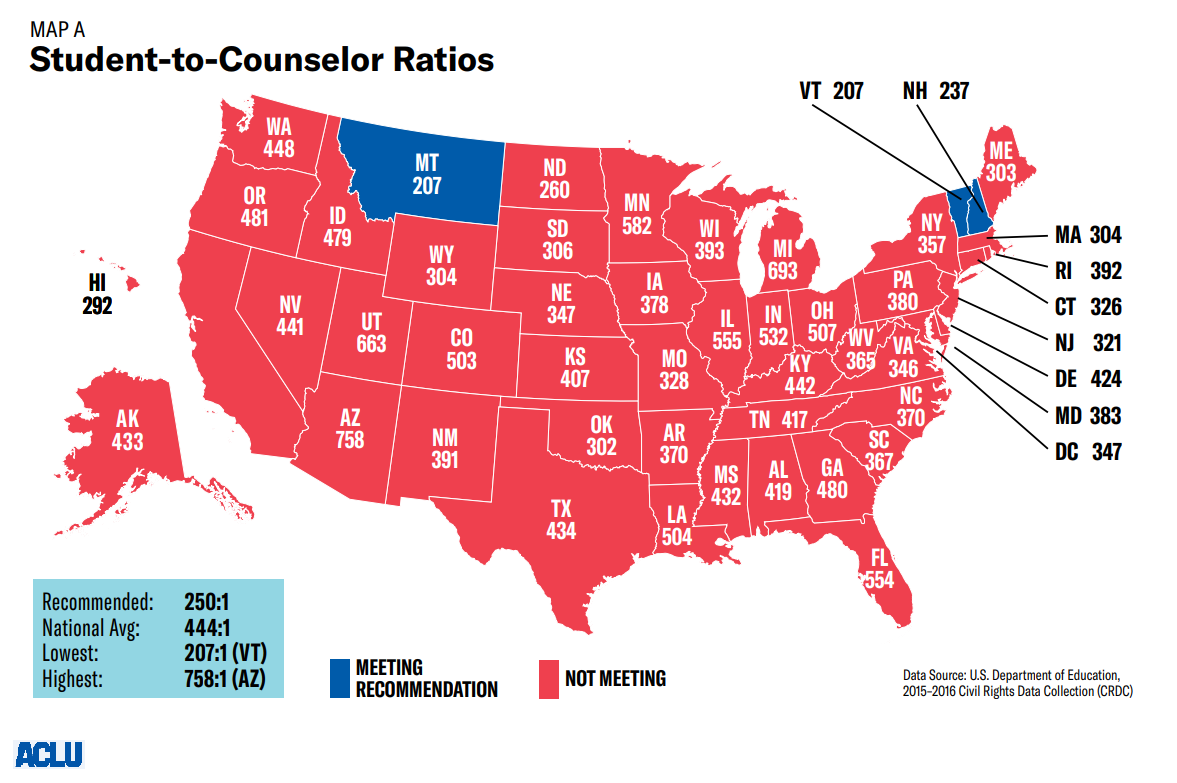 That adds up to tens of thousands of schools that are unequipped to meet the social, emotional, or behavioral needs of students.
That adds up to tens of thousands of schools that are unequipped to meet the social, emotional, or behavioral needs of students.
Millions of students are in schools with law enforcement, but no support staff:
- 7 million students are in schools with police but no counselors
- 3 million students are in schools with police but no nurses
- 6 million students are in schools with police but no school psychologists
- 10 million students are in schools with police but no social workers
Many states report two to three times as many police officers in schools as social workers.
“These glaring deficits in mental health staff for students are inexcusable, especially in comparison to the number of reported law enforcement in schools,” the report states.
School Arrests, Offenses, and Law Enforcement Referrals
Students of color are more likely to go to a school with a law enforcement officer, more likely to be referred to law enforcement, and more likely to be arrested at school, according to the report.
Schools with law enforcement officers reported 3.5 times more arrests than schools without police.
Nationally, Latino students were arrested at a rate 1.3 times higher than that of white students. In some states, they faced even greater disparities, as they were twice as likely to face arrest as white students.
Other startling data showed:
- Latina girls were arrested at a rate 1.5 times that of white girls. In Massachusetts, Latinas make up 18% of enrolled students but 48% of the arrests.
- Black and Latino boys with disabilities were 3 percent of students but were 12 percent of school arrests.
- Nearly 95% of incidents classified as “serious offense” were without a weapon.
Some common student behaviors leading to school arrests include “disorderly conduct” for cursing, “drug possession” for carrying a maple leaf, and “disrupting school” by fake burping.
Moreover, some incidents were underreported or overreported.
For example, only 11 schools confirmed school shootings although the U.S. Department of Education reported 240, according to the report.
“Now more than ever, school boards and administrators need guidance to navigate their responsibility to ensure each of their students are safe from discriminatory discipline, especially when they engage law enforcement,” the report states.
Federal, state, and local dollars must prioritize counselors, psychologists, social workers, and nurses instead of police.
Recommendations
Below are recommendations at the federal, state, and local level that can be taken to support student success, safety, and civil rights.
Federal-level recommendations:
- Increase funding for student support services, including mental health staffing and programming
- Provide equal protection for students
- Improve data collection
- Do not provide federal funds for weapons and law enforcement in school
- Ensure legislation does not unnecessarily criminalize students
State-level recommendations:
- Prioritize funding of students support services over law enforcement
- Advocate for school mental health services within state policy as recommended by the National Association of School Psychologists (NASP)
- Invest in evidence-based and culturally responsive social-emotional learning programs
- Ensure accurate data is submitted to the Civil Rights Data Collection (CRDC)
- Support investigations into complaints and allegations of discrimination
- Ensure accurate state-level reporting of the number of law enforcement, security guards, school arrests and referrals to law enforcement
Local-level recommendations:
- Use local resources to prioritize school-based mental health providers
- End routine policing practices inside schools
- Require equity assessments of all schools with police that evaluate their impact
- Reinvest resources from law enforcement to support staff
- End the practice of arrests and referrals to law enforcement for common adolescent behaviors
- Limit the adoption of highly-visible, tough security measures
- Ensure accurate data is submitted to the Civil Rights Data Collection (CRDC)
- Ensure that school-based mental health providers are able to focus on mental health duties
- Provide trauma-informed service and trainings
- End punitive and net widening juvenile probation and diversionary programs
- Pass local transparency bills such as the Student Safety Act in New York City
- Enact policies that end police presence in schools and create specific protocols for police presence
- Mandate training for police on topics like adolescent development, implicit bias, communication, and de-escalation
Share this report with school leaders in your community to push for equitable social, emotional and psychological services and supports in schools.
Take Action: Start Handle With Care in Your School, Even If Closed
Even amid the coronavirus pandemic or summer, you can start a Handle With Care program.
Download the free Salud America! “Handle With Care Action Pack.” The Action Pack helps police, school, and mental healthcare leaders start the Handle with Care program, in which police notify schools when they encounter children at a traumatic scene, so schools can provide support right away.
Over 700 school and police leaders around the nation already have downloaded the Action Pack to start Handle With Care in their areas!
Take Action: Make Your School Trauma Sensitive
John Hernandez got tired of seeing students facing poverty and trauma, miss school, and end up with disciplinary and even criminal consequences.
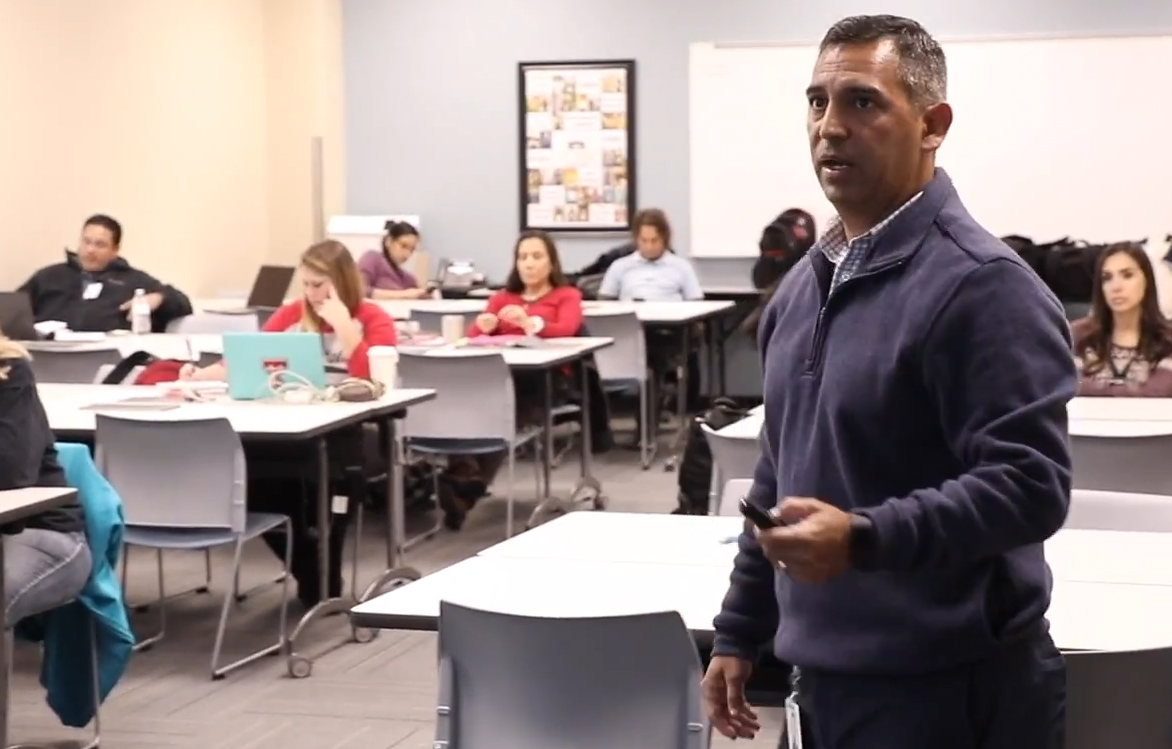
Hernandez, the student services director at East Central Independent School District in San Antonio, Texas, took it on himself to do something.
He started a program to identify, support, or counsel these students.
Over the past two years, Hernandez and the EC Cares committee created a trauma-sensitive tracking system.
They put a response protocol in place to alert necessary staff if a student was dealing with adversity at home. The entire EC Care committee and numerous other staff at ECISD were trained about the impact childhood adversity has on learning and behavior. And they worked on being proactive rather than reactive inside the classroom while also connecting students and families to resources outside the classroom.
“Trauma doesn’t stop at 4 o’clock and it doesn’t stop at graduation,” Hernandez said.
Our team worked with Hernandez to create the Salud America! “Trauma Sensitive School Action Pack.”
This is a free guide with coaching to help school personnel talk to decision-makers, build a support team, craft a system to identify and support traumatized students, and more!
By The Numbers
142
Percent
Expected rise in Latino cancer cases in coming years



